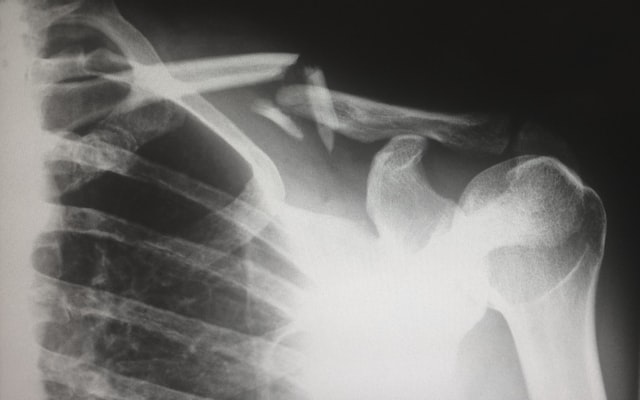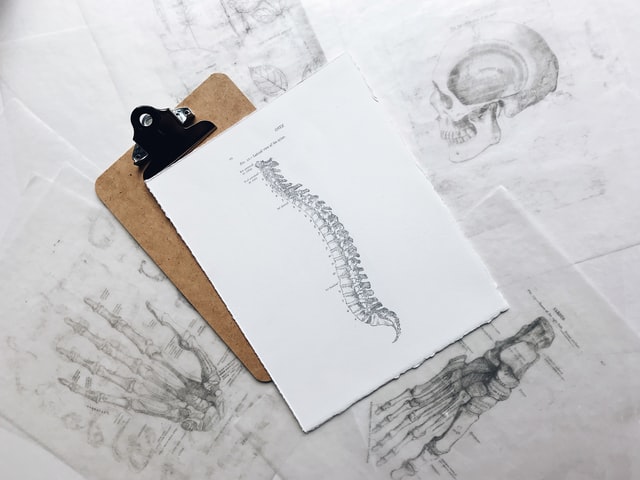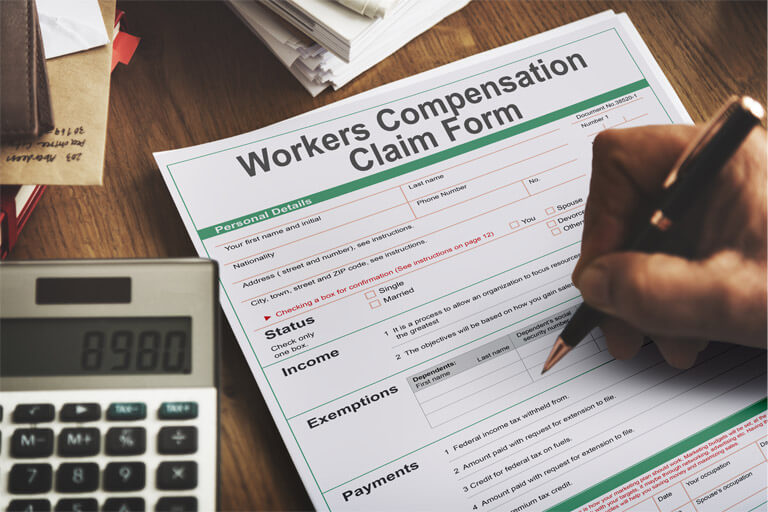





Workers’ compensation payments are intended to ease the financial burden that can be placed on workers that have been injured on the job. By examining a number of factors such as your wages, the length of time you are away from work, medical expenses and more, your compensation payment can be determined.
But it begs the question:
Are there any instances where being injured on the job would leave you ineligible to receive workers’ compensation?
The short answer is yes, but only in special cases. First, we’ll dive into some of the more common situations that would allow you to receive workers’ compensation payments.
Workplace injuries can materialise in a number of forms, ranging from physical injury to psychological harm. Work-related injuries can also be sustained in a number of different contexts. You may be injured during your normal working hours, in your travels for work, while you’re on a scheduled break during work hours, or in general as a direct result of doing your job.
Provided the previously mentioned conditions are met, there are not many situations where workers’ compensation is not available to you, at least in some capacity.
If you have sustained an injury during the course of your employment that can be clearly attributed to your working situation, then workers compensation is an option that you can pursue.

Some may feel discouraged to claim workers’ compensation because they are unaware of what makes them ineligible. In reality, every case is different and must be treated as such. The following are some of the cases in which you may be unaware of your entitlement to successfully claim compensation.
If you have been injured at work, the experts at GC Law can be instrumental in helping you to navigate your workers’ compensation claims process. For more information about whether or not your injury is covered as part of workers’ compensation law in Queensland, contact us today!


After the initial stress of your accident has dulled and you are left with uncomfortable neck pain, one of the most frequently asked questions we receive is:
“Can I claim compensation for whiplash?”
Whiplash can be caused by a sudden head movement backward and then forwards, the kind of jarring movement that can often occur in a car accident. It is a neck injury that can cause mild to severe pain through the neck and shoulders, often making daily activities difficult. This pain can also be accompanied by other less common symptoms such as vertigo, difficulty focusing, and headaches.
In mild cases, whiplash can be treated with self-care such as over-the-counter pain medication and ice. However, in other cases, treatment by a physiotherapist may be necessary for recovery, which for many is another unwanted financial expense. The pain and symptoms associated with whiplash may also require you to take time off work, entitling you to compensation.
If you have been the victim of a car or road accident resulting in personal injuries such as whiplash, you may be entitled to compensation. If the level of injury you have sustained is severe enough that you are needing to take time off work or you cannot treat the pain effectively with over-the-counter painkillers, then you may be successful in a whiplash claim.
It is unlikely however that you will be able to claim compensation for whiplash if the pain subsides within a few days.
Each whiplash claim we assist with is different, and the claim worth is dependent on several factors concerning the accident and the injury itself. When your injury requires medical assistance and possibly ongoing treatment, your whiplash claim should aim to cover these expenses either partially or in full. It should typically cover any past and future costs associated with all physical and psychological fees related to your injury.
Some examples of expenses you may be able to claim include:
As with all claims for personal injury compensation, claimants need to provide sufficient evidence to support their claim. If it is suspected that the claim is fraudulent, and you are unable to provide a professional medical diagnosis then it is possible for a whiplash claim to be refused.
This is why engaging a GC Law solicitor can help ensure you have the best chance of succeeding with your claim, as we are able to help navigate you through the legal process. Learn more about our process here.
To claim whiplash, a personal injury, you need to show that the accident was the fault of another person or organization. If the accident was entirely your fault it is unlikely you will be able to make a claim, however, if you were only partly at fault then you may be successful in claiming compensation.
If you have been in an accident and you are unsure who is at fault, it is best to get an opinion from a qualified lawyer. The experienced solicitors at GC Law will be able to easily navigate the legal process associated with your accident and determine whether you have a claim.

When successful, whiplash claims are covered or paid for by the insurer of the driver or person at fault for the accident. As someone who has suffered whiplash during a car accident, you are entitled to submit a whiplash claim to the insurer of the vehicle deemed to be at fault.
There are a lot of factors that determine how long a whiplash claim can take, such as how complicated your situation is, how serious your injuries are, and what treatment you require. One of our expert personal injury lawyers Gold Coast will be able to assess your situation and give you an indication of the time frame you can expect for your claim.
After a car accident, it may take up to a few days for the symptoms of whiplash to arise. Your doctor will be able to assess your injuries and give you an indication of when you will be able to return to your normal activities. The timeline for your recovery is heavily dependent on the severity of your injury, however in most cases, people are able to return to their usual activities after a few weeks.
If you wish to claim for whiplash after a car accident it is important to see a medical professional to receive an official diagnosis to use in your claim. It is then recommended to get in touch with us. We can help you navigate the legal process and ensure you have the best possible chance of being successful in claiming compensation.
Contact GC Law for personalized help with your whiplash claim.

A recent Court of Appeal decision has highlighted the importance of employers identifying hazards in the workplace – even if the workplace is the worker’s home. Risks may include the physical environment (such as tripping, ergonomic or electrical hazards) but also the risk of a worker being injured in a domestic violence situation.
In Queensland, a worker is entitled to workers’ compensation benefits if their employment was a significant contributing factor to the injury. If an employer knew, ought to have known or had suspicion of domestic violence towards a worker, then the employer has a duty to control that risk.
An employer must have a system in place to identify hazards in the workplace, including any remote workspace.
Many workers are now working from home. It seems in many organisations, the option of working from home may become permanent and we will see more flexible working arrangements in the future. This poses a significant risk to employers if they do not consider the workplace health and safety of their workers.
As the employee, if you are performing a task or activity because of or to fulfil your employment and happen to sustain an injury whilst working from home, you will be entitled to workers compensation. If you are performing a task that is not relevant to your role that you are employed to do and sustain an injury whilst working from home, you will not be covered and will not be entitled for workers compensation. This will however depend on the circumstances of your case, and we recommend you get in touch with a compensation lawyer to determine if you have a viable claim.
In 2011 the Administrative Appeals Tribunal decided in favour of a worker who was injured while working in her own home. In the matter of Hargreaves and Telstra Corporation Limited [2011] AATA 417 (17 June 2011) the worker was injured when she fell down the stairs at her home while she was working for Telstra. At the time of each fall she was logged into Telstra’s computer system and had gotten up from her workstation for a short break, like taking a tea break in an office environment. In this case, the worker was entitled to make a claim for workers’ compensation for the injuries that she sustained at work.
Employees also must take reasonable care when working from home and will not always be entitled to compensation if injured whilst working from home. As the employee, if you have any concerns about your work environment at home, you need to raise this with your employer who can assist in arranging a safer workspace.
If you have been injured at work or during the course of your employment, you should contact GC Law for FREE advice about your workers’ compensation entitlements.



This article discusses the individual roles in the rehabilitation process after a WorkCover claim. To find out more information about making a WorkCover claim and the process involved, view our article regarding What To Expect When You Have a WorkCover Claim.
Click the links below to go to the relevant section of this article, or read along to find out more.
An injured worker must genuinely participate in rehabilitation. If you don’t, WorkCover may suspend payment of compensation benefits.
You are required to:-
• keep WorkCover informed of any material change in your circumstances; and
• to advise WorkCover of any return to work, while receiving weekly compensation payments.
If WorkCover is not informed of any new circumstances, penalties can apply.
Employers must take every reasonable step to help you with rehabilitation while you are receiving compensation benefits. If they don’t, penalties apply.
An employer with 30 or more employees in a high risk industry must have a Rehabilitation and Return to Work Coordinator. The coordinator is responsible for planning and monitoring the workers reintegration into the workplace. They are required to liaise with you, your doctors, rehabilitation providers and WorkCover, until the claim is finalised.
An employer with less than 30 employees is required to keep in regular contact with you and WorkCover, in addition to supporting the rehabilitation process.

A WorkCover Customer Advisor is the person who manages your claim until your condition has stabilised or you recover. A customer advisor is responsible for approving treatment and working with rehabilitation providers to set recovery goals and develop a return to work plan. The customer advisor is the central point of contact during the rehabilitation process.
The treating doctor’s role in the rehabilitation process is to determine what rehabilitation you need as a result of your work related injury. Rehabilitation might include physiotherapy, occupational therapy, psychological counselling or training for new job skills.
The customer advisor will consult the treating doctor and other rehabilitation providers to develop a return to work plan. The treating doctor must give approval before any plan is started, or as changes to the plan occur.
Sometimes, WorkCover will engage an external occupational therapist to conduct a worksite assessment, to gather information regarding rehabilitation or developing a suitable duties program.
Health providers, other than treating doctors, play an important role in the rehabilitation process. Health providers are required to:-
• provide focussed rehabilitation aimed at you returning to work;
• provide assessments, written reports and give feedback to customer advisors;
• keep WorkCover advised of your progress; and
• participate in case conferencing when asked to do so.
To find out more information about making a WorkCover claim and the process involved, view our article regarding What To Expect When You Have a WorkCover Claim.
Contact the team at GC Law today for your free case review.

A case conference is a discussion about your treatment, rehabilitation or return to work, and is usually held between you, your treating doctor or rehabilitation provider and the WorkCover customer advisor. A case conference can be held face-to-face or by telephone. The purpose of this forum is to plan and manage an injured worker’s return to work.
At a case conference, information is shared about your injury, future treatment, rehabilitation and return to work needs. In most cases, a case conference replaces the need for a written report. After a case conference has concluded, the WorkCover customer advisor will provide a written summary of the discussion to everyone who attended the case conference.
WorkCover will pay the doctor’s and health provider’s time based on item numbers in the Regulator’s Table of Costs. WorkCover includes the relevant item number and fee on the case conference form. The invoice can be faxed to WorkCover and it will be processed.
Please view our post about Queensland WorkCover Claims if you are after more information about how your case will work. If you would like to discuss the details of your WorkCover compensation case, please get in touch with one of our compensation lawyers today.







